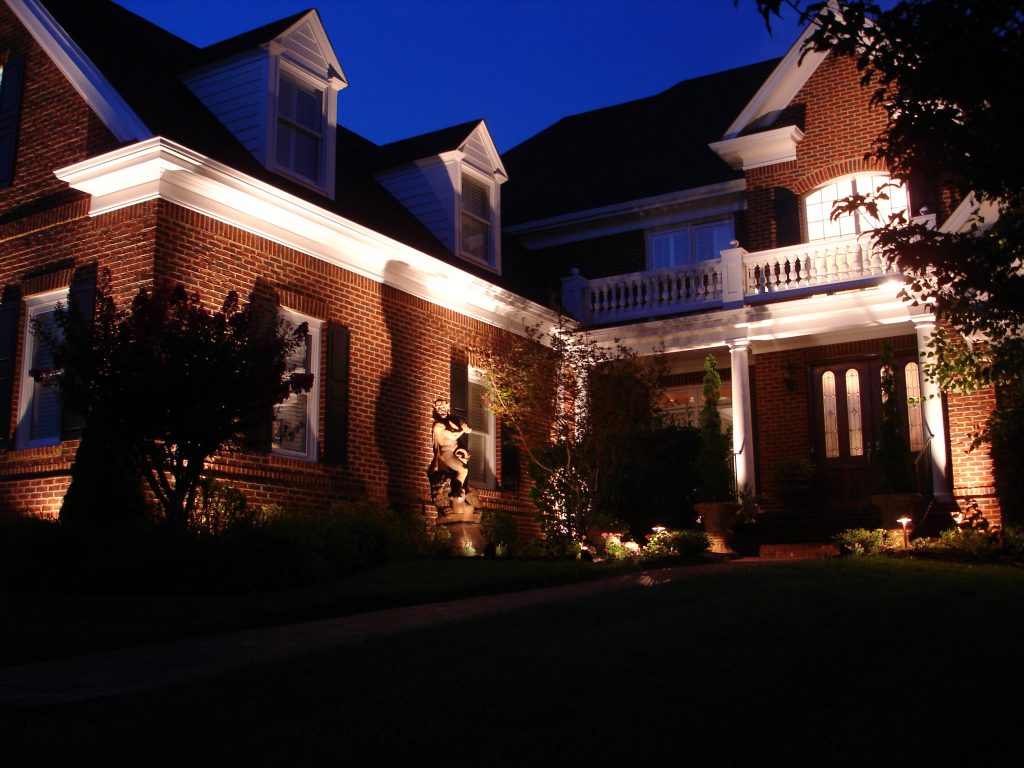Six Things To Consider For A Landscape Lighting Plan

Six Things To Consider For A Landscape Lighting Plan
Landscape lighting is as much of an art as it is a science.
Before designing a landscape lighting plan, there are six things a landscape architect should consider.
- Client goals and objectives
- Ambient light levels
- What materials and objects going to be illuminated
- What types of plants will be illuminated
- What should not be lit
- Applicable laws, regulations, and codes
Let’s look at each item in more detail.
What Are The Client Goals & Objectives?
Landscape architects must first consider the client’s goals and objectives for the site at night. The client may have several competing goals in mind. For some clients, safety and security are the primary goals. Other clients may want to emphasize the architectural qualities of the site’s buildings and landscape features. The intended nighttime site use determines how the site will be illuminated.
Questions to ask the client early in the design phase include:
- Who is the nighttime audience or target user?
- Where will the space be viewed at night?
- Will site visitors only view the space or navigate through the site?
- How will the space be used at night?
- What is the most important feature or critical focus?
- What is the Site’s Ambient Light Level?
The site’s ambient light levels influences the amount of additional light that the designer will use to achieve the desired lighting effect. Existing site lighting, street lighting and lighting from adjacent properties all may affect the ambient light level.
What Materials & Objects Will Be Illuminated?
Before a landscape architect can start to design a landscape lighting plan, he or she needs to identify which objects or spaces need to be illuminated. Determine the design’s focal points are circulation system before beginning the lighting design.
Consider the color and materials of the objects you are going to illuminate. Rough-textured objects can be accentuated with some illumination techniques. Dark surfaces will require more light than lighter objects. A savvy designer will find gather useful information early on in the design process.
What Types of Plants Will Be Illuminated?
Plants can have a dramatic affect on the final lighting design. Trees can be up-lit, down-lit, cast shadows, or silhouetted. Landscape lighting effects can take advantage of interesting forms or textures of plants in the landscape.
What Should Not Be Lit?
Not every item in the landscape needs to be illuminated. Determine which objects do not require illumination for safety or as an accent in the landscape. Light trespass and light pollution are other things to avoid. Keep the light on your site and off of adjoining properties. Use cutoff fixtures to direct away from the sky and towards the ground to prevent light pollution.
What Are The Site’s Applicable Laws, Regulations, & Codes?
Determine the regulatory framework for the site before you begin the design. In California, Title 24 of the Energy Code restricts the amount of power that exterior lighting can consume. Additionally, the site’s “Light Zone” affects the amount of light than can be used based on the land use and density. Other codes include the California Electric code and codes that apply to swimming pools if water features are to be illuminated. Additionally, local codes can add layers of restrictions and complexity to the process.
Before starting a lighting plan, it is critical to determine the site’s and client’s goals and objectives. Determine what features will be illuminated and what not to light. And finally, determine energy restrictions that affect the lighting design.
via Six Things To Consider For A Landscape Lighting Plan | CSE for Landscape Architects.
